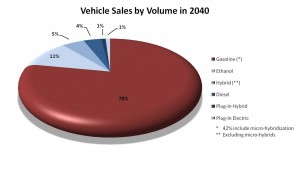Tesla, the innovative company that continues to challenge the norms and practices of the traditional automotive industry is finding itself struggling with less glamorous issues that mainstream automakers have tackled and, to a great extent, perfected over more than a century: volume manufacturing.
Building a Supply Chain
According to a recent Bloomberg report, Tesla plans to increase sales by more than 50 percent this year to 35,000 units and accelerate annual production capacity to 100,000 units by the end of next year.
Back in August, during an earnings call, Tesla’s CEO Elon Musk discussed difficulties his company was having meeting market demand. Musk said suppliers are partly to blame because they are unable to fill Tesla’s orders: “some suppliers thought we wouldn’t be around, so they didn’t tool up for the production we actually experienced.”
Meeting Global Market Needs
While U.S. sales are responsible for about half of Tesla’s sales, its global business is healthy and growing, with strong sales in Norway (thanks to strong government incentives), followed by China. Japan, with the highest adoption of electric vehicles (EVs) and plug-in electric vehicles (PEVs), should also be a strong market for Tesla, although the company opened its sales operations in Tokyo’s swanky Aoyama district only in September.
Tesla’s challenge isn’t mere production capacity. Tesla’s factory in Fremont, California, which was previously a joint venture between General Motors and Toyota, has a capacity of over half a million units per year.
Sustained success in global auto markets requires major design changes such as right-hand driving for countries like Japan, or expanding the back seat legroom for cars sold in China where target customers employ chauffeurs. Furthermore, different markets have different preferences of options, trims and accessories. Accommodating regional differences adds significant complexity to manufacturing lines and supply chains, and, if not managed diligently, may also result in larger inventories and excessive quality spills and warranty expenses.
Tesla’s Growing Pains
Transitioning from small production series based on preorders with very long lead time to volume manufacturing is going to challenge Tesla’s manufacturing and logistics operations.
Tesla’s current manufacturing model will not be able to scale to meet global demand, especially in Europe. Currently, cars are built and tested in Fremont, California, then are partially disassembled and shipped to Tilburg, in the Netherlands, where the cars are reassembled and shipped to their final destination.
Tesla will have to be more accurate in forecasting market demand, and work with key suppliers to build a resilient and lean global supplier network. But given the still small market for Tesla cars this may prove harder and more expensive than Musk would have liked.
As the market for EVs mature and grows so will the demand for greater variety of styles and sizes. Here, Tesla has the right platform strategy in place: Model X crossover, a utility van and cabriolet are expected to be based on the second generation platform shared with the Model S. The partnership with Toyota, another company with a solid platform design strategy and strong reuse culture, will also help.


